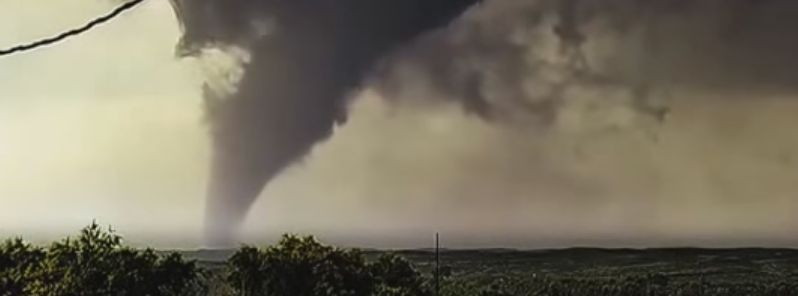Extreme tornado outbreaks becoming more frequent in US

A new research suggests the frequency and magnitude of outbreaks of extreme tornado events have increased in the US over the last 50 years. However, the relationship between the events and the climate change is still not revealed and will require further research.
Tornado outbreaks or the so-called 'tornado clusters' are events where a series of at least six tornadoes occur in a short time span. Such events are accountable for 79% of tornado-related fatalities in the US, in the period between 1972 and 2010.
In a new study, the researchers investigated how tornado clusters evolved in the period between 1965 and 2015. They discovered that the number of tornadoes in the most extreme weather outbreaks doubled over five year periods.
A previous research revealed the average number of tornado outbreaks is on the rise since 1954. The new study has performed a more in-depth data analysis. The scientists have used statistical methods to investigate how the number of the most extreme outbreaks changed over the years. An event of at least 12 or more tornadoes in the order of at least F1 or EF1 was classified as an extreme outbreak.
Researchers discovered that extreme outbreaks occurred more frequently and that the more extreme the outbreak was, the faster the occurrence was rising. For example, an outbreak with a 20% chances of taking place in a year would sprout about 40 tornadoes in 1965, in comparison with 2015 when 80 tornadoes occurred.

Video credit: earthsky102


Video credit: Weekly Facts via YouTube
The research revealed that the estimated increase doesn't relate to the climate change factors, such as convective available potential energy.
"This study raises new questions about what climate change will do to severe thunderstorms and what is responsible for recent trends," said Michael Tippet, a Columbia University professor and a co-author of the study.
Instead, the scientists have proposed the existence of other factors which could be responsible for driving low-frequency climate variability. for example the Atlantic Multidecadal Oscillation (AMO). The AMO describes the oscillating pattern of sea surface temperatures responsible for affecting the climate of North America.
It appears the changes observed in the AMO correlate with changes noted in tornado outbreaks, although the matter still requires further research. The researchers have stressed it is important to gain a deeper understanding of these events in order to predict if such a trend will continue.
A severe tornado outbreak wreaked havoc in the South US over the last few days. Three dozen tornadoes were officially confirmed across eight states. Three tornadoes were given an EF3 magnitude rank. Seven people were reported dead.
Reference:
- "More tornadoes in the most extreme U.S. tornado outbreaks" – Michael K. Tippett, Chiara Lepore, Joel E. Cohen – Science (2016) – DOI: 10.1126/science.aah7393
Featured image: Deadly tornado outbreak in the South US, November 2016. Image credit: Weekly Facts via YouTube

Commenting rules and guidelines
We value the thoughts and opinions of our readers and welcome healthy discussions on our website. In order to maintain a respectful and positive community, we ask that all commenters follow these rules.